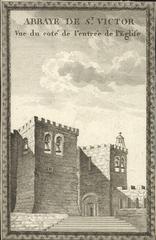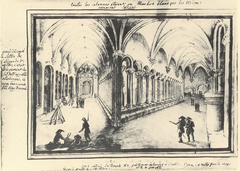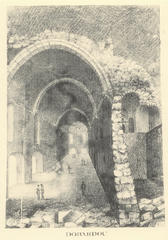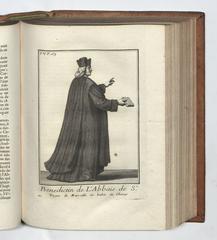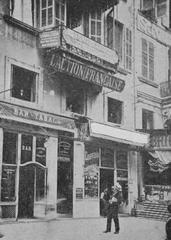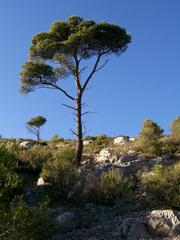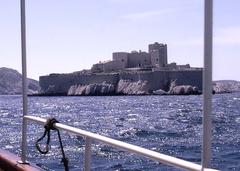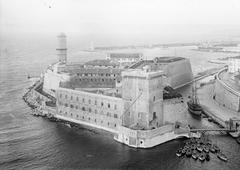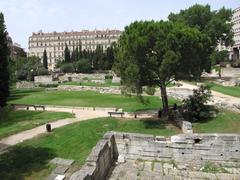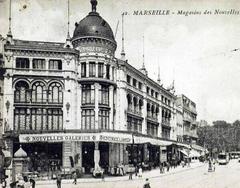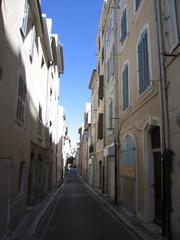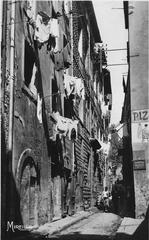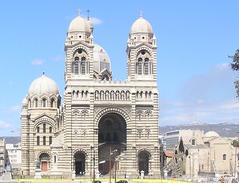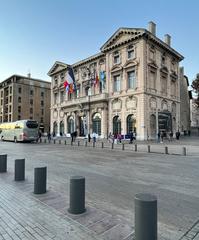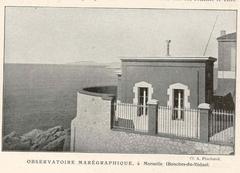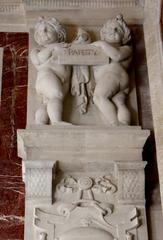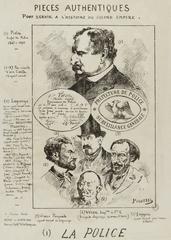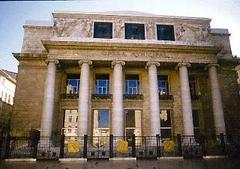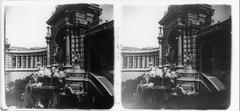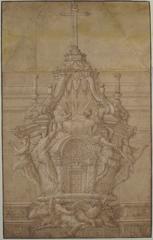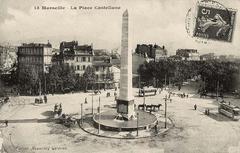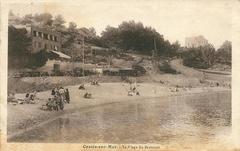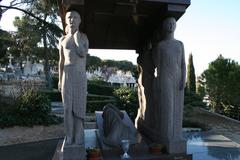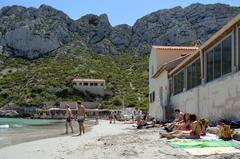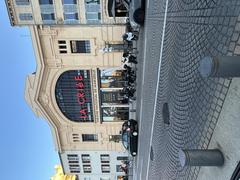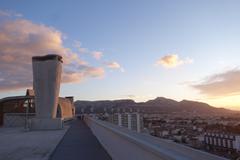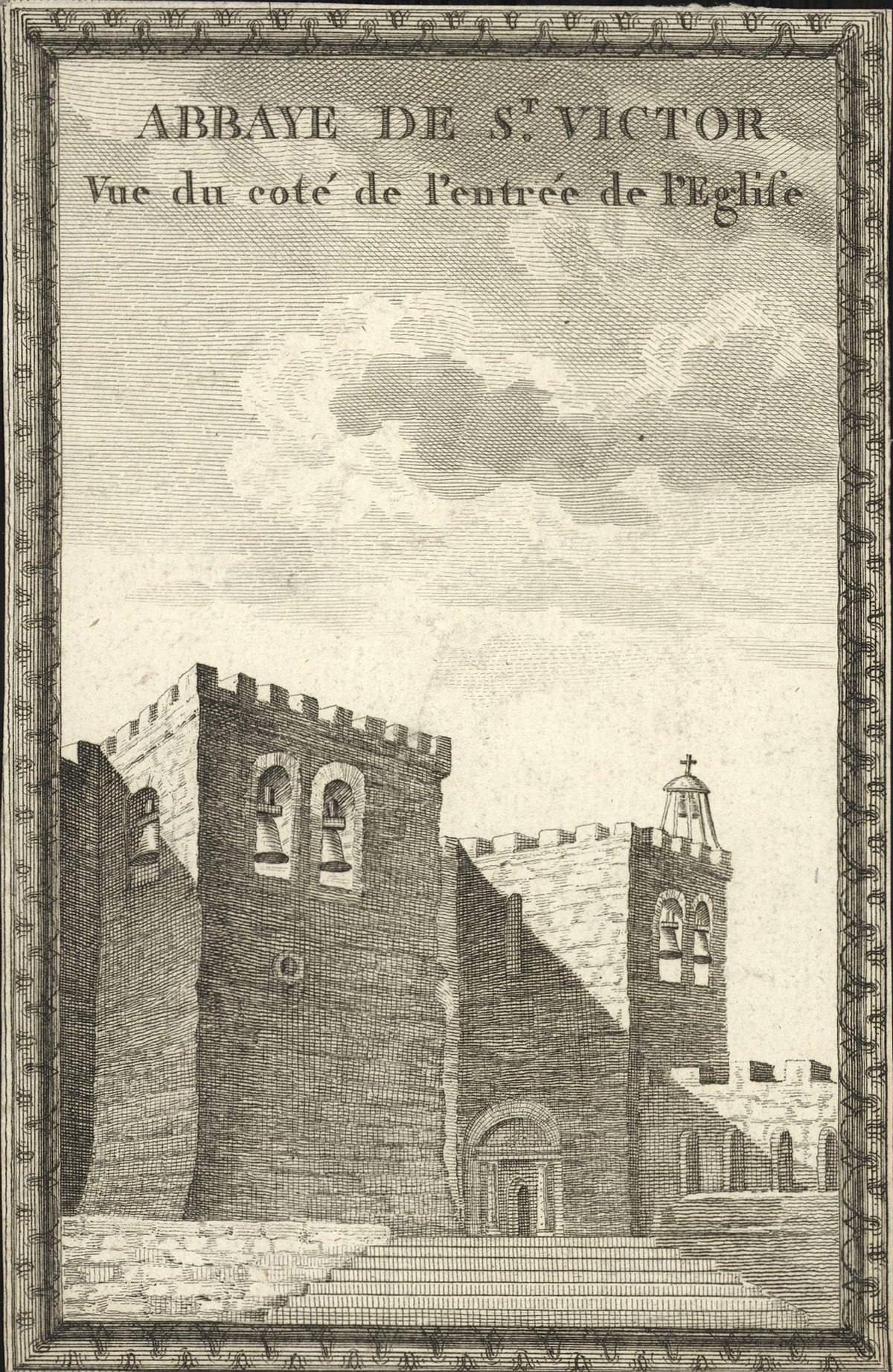
Abbey of St Victor Marseille: Visiting Hours, Tickets, and Historical Sites Guide
Date: 14/06/2025
Introduction
The Abbey of St. Victor in Marseille is one of France’s oldest and most significant Christian landmarks, embodying over 1,600 years of religious, architectural, and cultural heritage. Founded in the early 5th century by John Cassian, this remarkable abbey occupies a site with ancient Greek, Roman, and early Christian roots, making it a unique testament to the city’s spiritual evolution (Wikipedia; Abbaye Saint-Victor, Marseille).
Throughout centuries of invasions, destruction, and restoration, the abbey’s Romanesque and Gothic architecture has reflected its dual roles as a spiritual sanctuary and a fortified stronghold (monumentsdemarseille.com). Its crypts, among the largest in Western Europe, hold layered sarcophagi and revered relics, including those of Saint Victor and John Cassian, and continue to attract pilgrims and visitors (Colorbus; Atlas Obscura).
Today, the Abbey of St. Victor remains a vibrant part of Marseille’s living heritage, hosting annual events such as the Candlemas procession, classical music festivals, and ecumenical celebrations that showcase the city’s Mediterranean diversity (Marseille Tourisme; La Provence). This guide provides a comprehensive look at the abbey’s history, architecture, spiritual significance, and essential information for visitors.
Table of Contents
- Introduction
- Origins and Early Christian Foundations
- Medieval History and Restoration
- Architectural Features
- Spiritual and Cultural Significance
- Notable Events and Modern Role
- Visiting Information
- The Crypts: Early Christian Heritage
- Candlemas and Local Traditions
- Museum and Events
- FAQs
- Visitor Tips
- Conclusion
- References
Origins and Early Christian Foundations
The Abbey of St. Victor is among the oldest Christian sites in France, with evidence of worship dating back to the late Roman era. Originally a Greek quarry, the site became a necropolis in the 2nd century BCE before its Christian transformation (Wikipedia; Spotting History). In 415 CE, John Cassian, a monk and theologian, founded the abbey with the support of Marseille’s bishop, Proculus. Named after the martyr Saint Victor, the complex initially hosted both male and female monastic communities (GuideTourism; Thrillophilia).
Medieval History and Restoration
The abbey’s early centuries were marked by growth and adversity. Its strategic location near Marseille’s Old Port made it vulnerable to Viking and Saracen raids in the 9th and 10th centuries, causing significant destruction (Spotting History). Monastic life was restored in 977, and the abbey then became a regional center for monastic reform and religious leadership.
Architectural Features
Romanesque and Gothic Elements
The Abbey of St. Victor is a striking blend of Romanesque and Gothic styles. The crypts—dating to the 4th century—are among the most ancient features, while the main church’s nave and fortified façade reflect the robust Romanesque architecture of the 11th century (Colorbus). Gothic expansions in the 13th and 14th centuries added elegant aisles, chapels, and fortified towers (Marseille Tourisme).
Defensive Architecture
Unique among religious sites, the abbey’s thick walls, crenellations, and massive towers were designed to withstand attacks, integrating spiritual and military functions (monumentsdemarseille.com). The site’s fortress-like appearance set it apart from other monastic complexes and reflects Marseille’s turbulent medieval history.
Spiritual and Cultural Significance
The abbey has long been a center of spiritual life, scholarship, and community. Its scriptorium played a crucial role in preserving religious texts, and its monastic customs influenced Christian practices throughout Provence (History Tools). The crypts, housing relics of Saint Victor, John Cassian, and other saints, continue to attract both pilgrims and tourists.
Among its most revered treasures is the Black Madonna statue, central to Marseille’s Candlemas celebrations. The abbey also hosts classical music concerts and serves as a venue for religious and ecumenical events (Marseille Tourisme).
Notable Events and Modern Role
Despite periods of decline, including damage during the French Revolution, the abbey has been continuously restored and preserved. In 1840, it was declared a historical monument (GuideTourism). Today, it remains an active church, hosting daily Masses, special celebrations, and cultural events that draw visitors from around the world (Thrillophilia).
Visiting Information
Visiting Hours & Admission
The abbey is open daily:
- Main Church: 09:00–18:00 (extended to 19:00 in summer)
- Crypts: Last entry 30 minutes before closing
Admission to the main church is free. Tickets for the crypts cost €2 per person (€1 for groups of ten or more) (nomads-travel-guide.com; marseille.city-life.fr).
Guided Tours
Guided tours are offered in multiple languages, typically on Tuesdays and the first Saturday of each month (16:00–18:00). Advance booking is advised during peak seasons.
Accessibility
The main church is accessible to visitors with mobility challenges, but the crypts require descending stairs and navigating uneven flooring. Assistance is available upon request.
Location & Transport
- Address: 3 rue de l’Abbaye, 13007 Marseille, France
- Metro: Vieux-Port – Hôtel de Ville (Lines 1 & 2)
- Bus: Several lines serve the Old Port
- Parking: Limited nearby; public garages recommended
Best Time to Visit
Early mornings or late afternoons are best for a peaceful visit. The annual Candlemas procession (February 2) is a cultural highlight but attracts large crowds.
Nearby Attractions
The abbey’s location near the Old Port makes it ideal for exploring other sites:
- Notre-Dame de la Garde Basilica
- MuCEM (Museum of European and Mediterranean Civilisations)
- Le Panier district
- Fort Saint Nicolas
The Crypts: Early Christian Heritage
The crypts are a highlight of any visit, featuring ancient sarcophagi, tombs of saints, and relics from the Roman necropolis (touristplatform.com). The Black Madonna, a focal point for Candlemas celebrations, is also housed here (myguidemarseille.fr). The crypts’ cool, atmospheric chambers offer an evocative journey through Marseille’s Christian past.
Candlemas and Local Traditions
Candlemas (La Chandeleur), held annually in early February, is the abbey’s most celebrated event. The dawn procession from the Old Port, blessing of the Black Madonna and green candles, and distribution of “navettes” pastries are unique Marseille traditions (La Provence; marseille.city-life.fr).
Museum and Events
A small museum in the abbey’s garden displays Roman artifacts, medieval manuscripts, and interpretive panels (touristplatform.com). The abbey regularly hosts organ concerts and special events—check local listings or the official website for schedules.
FAQs
Q: What are the visiting hours?
A: Daily 09:00–18:00 (to 19:00 in summer); crypts close 30 minutes before the abbey.
Q: How much are tickets?
A: Main church: free. Crypts: €2 per person (€1 for groups of 10+).
Q: Are guided tours available?
A: Yes, on Tuesdays and the first Saturday of each month (16:00–18:00).
Q: Is the abbey accessible for visitors with reduced mobility?
A: The main church is accessible, but the crypts and towers involve stairs.
Q: Can I attend religious services?
A: Yes, daily Masses and special celebrations are open to the public.
Q: Is photography permitted?
A: Yes, but flash and tripods may be restricted in certain areas.
Visitor Tips
- Arrive early for a tranquil experience before tour groups.
- Wear sturdy shoes and bring a jacket for the crypts.
- Pair your visit with a walk along the Old Port or a tour of Le Panier.
- Check the abbey’s calendar for special events or concerts.
- Sample “navettes” biscuits at the nearby Four des Navettes, especially during Candlemas.
Conclusion
The Abbey of St. Victor is a living monument to Marseille’s spiritual, architectural, and cultural heritage. Its ancient crypts, imposing towers, and vibrant traditions offer an enriching journey through the city’s past. Whether your interest lies in faith, history, art, or local customs, the abbey provides a rewarding and memorable experience. For up-to-date information and guided resources, visit the official Abbey site and the Marseille Tourism Office.
References and Further Reading
- Abbey of St. Victor, Marseille – Wikipedia
- Abbaye Saint-Victor, Marseille – Official Site
- Abbaye Saint-Victor – Monuments de Marseille
- Abbey of St. Victor – GuideTourism
- Abbaye Saint-Victor – France.fr
- Abbaye Saint-Victor – Marseille Tourism
- Abbaye Saint-Victor – Thrillophilia
- Abbaye Saint-Victor – Colorbus
- Saint Victor Abbey – Marseille Tourisme
- Candlemas at Saint Victor – La Provence
- Abbaye Saint-Victor – Nomads Travel Guide
- Abbaye Saint-Victor – City Life Marseille
- Abbaye Saint-Victor – Marseille City Hall
- Abbaye Saint-Victor – Diocese of Marseille
- Abbaye Saint-Victor – TouristPlatform
- Abbaye Saint-Victor – History Tools
- Abbaye Saint-Victor – Atlas Obscura
- Abbaye Saint-Victor – MyGuideMarseille.fr
- Abbaye Saint-Victor – BudgetYourTrip.com
